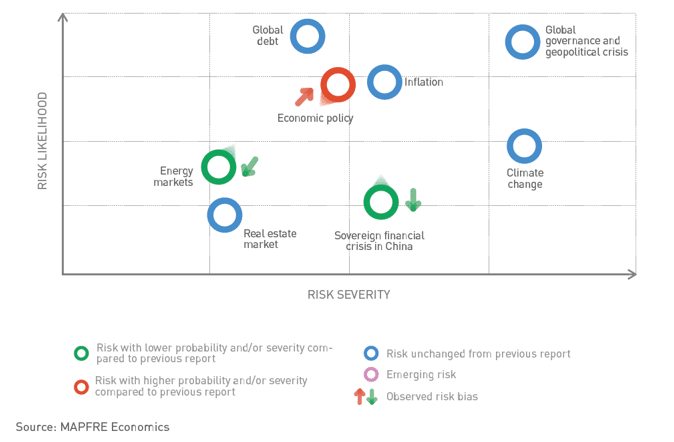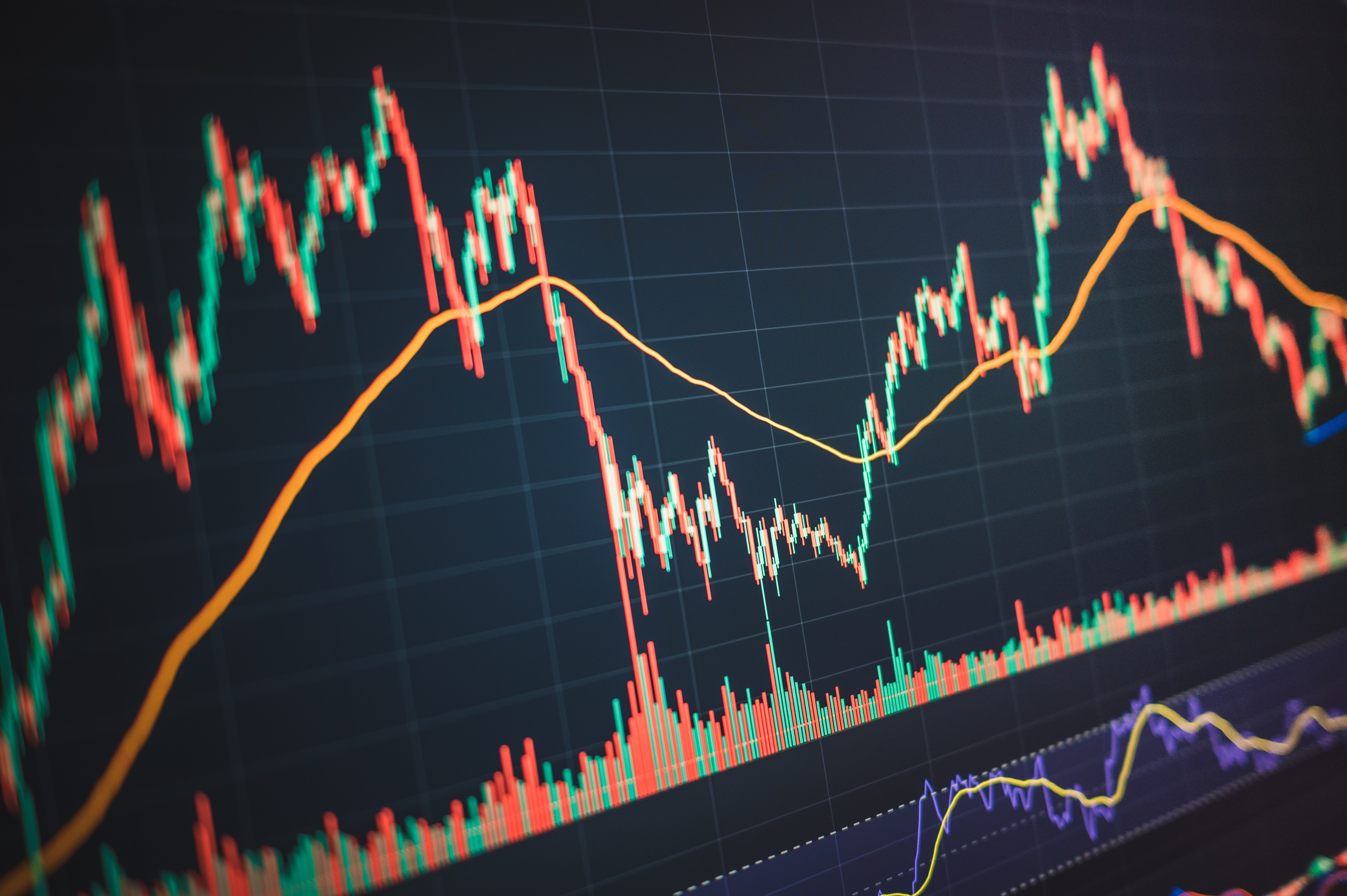Global economic outlook (Q2 2023)
Chart 2
Short-term risk balance: vulnerabilities and global risks
As regards monetary policy, the main central banks have continued advancing in the process of restriction and subsequent normalization, both on the balance sheet side and through interest rates, in an effort to slow down the credit cycle that is channeled towards lower demand, through stricter access standards, thus controlling inflation. To date, that effort has driven interest rates into restrictive territory at a record high rate. However, further developments are expected to be more marginal, allowing for an eventual acceleration in activity and for concerns over price stability shifting towards a focus on financial stability.
In short, the global outlook receives a moderately positive boost thanks to a calmer than anticipated start to the year, as well as uncertainties (such as the tail risks for 2022) that are clearing up, at least partially. This occurs, however, in a context in which it is recognized that global potential growth has fallen below 3%. At the same time, new fragilities are emerging in the financial system that remind us that perhaps the effects of the monetary overreaction are yet to come. Likewise, despite the fact that up to now it seems that the worst is now behind us, inflation has seen the downward pressure reduced and, with it its, rate of decline, leaving the main central banks faced with the complex dilemma between the search for price stability and financial stability. This is a dichotomy that can transition from a relatively benign baseline scenario to a risky one with relative fluidity, and where the effects of monetary policy lead to a harder landing.
Full analysis of the economic and industry perspectives with additional information and interactive charts on the Eurozone, Germany, Italy, Spain, the United Kingdom, the United States, Brazil, Mexico, Argentina, Turkey, Japan, China and the Philippines can be found in the report entitled 2023 Economic and Industry Outlook: Second Quarter Perspectives, compiled by MAPFRE Economics and available at the following link:






